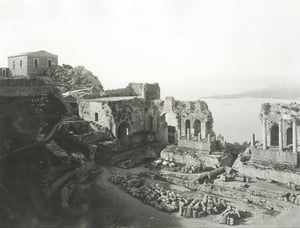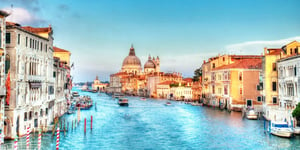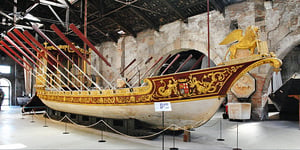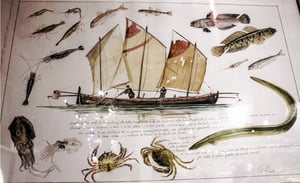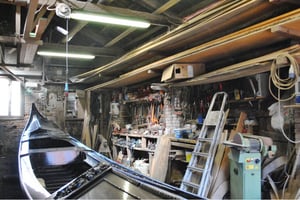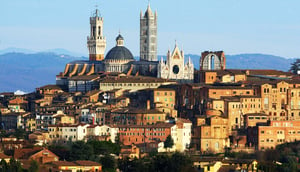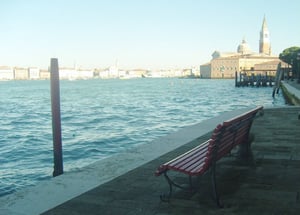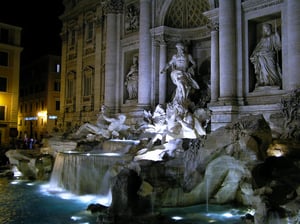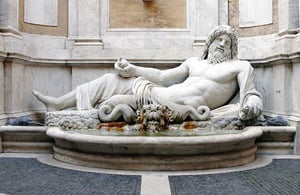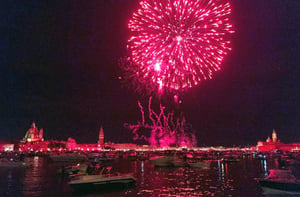Venetian is a Romance language and thus descends from Vulgar Latin. Although referred to as an Italian dialect even by its speakers, Venetian is a separate language. According to Tagliavini, it is one of the Italo-Dalmatian languages and most closely related to Istriot on the one hand and Tuscan–Italian on the other. The earlier Venetic people gave their name to the city and region, which is why the modern language has a similar name.
Venice has no streets, roads, districts, lanes or squares but instead has “calli”, “campielli”, “campi”, “fondamenta”, rio terà”, “sotoporteghi” and “sestieri”.
Nizioleti
Nizioleti are black writings on a white background frescoed or painted on the walls of calli, campielli and buildings to provide street names.
Sestieri
The term “sestiere” indicates what in many cities of the world are defined and known as districts.
Calli
The origins of the names of individual calli are often linked to the life of the city. There are calli that take their names from nearby churches or monasteries, calli that have very popular origins and owe their names to characters who lived or worked in the area and calli named after important figures in the history of Venice
There are also calli dedicated to the type of craft activities practiced in the area: often the various workshops of a particular trade are concentrated in specific areas of the city
There are over 3000 calli in Venice and Calle Varisco it is the narrowest of them all, with its final section only 53 cm in width. Calle Varisco is located in the Cannaregio district, halfway between Le Fondamenta Nove and Rialto Bridge. At one end, it overlooks Rio Santissimi Apostoli while the other end exits onto Campiello Pestrin.
Campi and Campielli
In the past, campi were green areas used for growing crops or grazing cattle and were scenes of lively social and commercial activity.
Many campi in the centre still have a well with the classic “vera”, a brick structure on which a pulley was installed for lowering buckets to be filled with water.
Campo San Polo is the largest campo in Venice, after San Marco. It gave its the name to the sestiere and acquired its present-day proportions in 1750. It is named after the adjacent church of San Polo.
The Piazza
The only piazza in Venice is Piazza San Marco, simply to distinguish it from the campi and campielli.
Sotoporteghi
A sotoportego is a connecting passage between calli or campielli created through a building.
Fondamenta
A fondamenta is a stretch of road that runs along the embankment of a canal or rio. Typically, fondamenta also have Istrian stone steps leading down to the water to allow the mooring of boats, loading and unloading of goods and embarking and disembarking of passengers.
La Fondamenta Della Donna Onesta
There is an interesting story about the Fondamenta della Donna Onesta (Embankment of the Honest Woman). Various stories and legends are still told today regarding the origins of this name.
According to some, it was the site of a workshop belonging to a swordsmith, whose wife was desired by another man. The man commissioned the manufacture of a dagger and, with the excuse of having to collect it, went to the shop and took advantage of the woman, who, being “honest”, took her own life out of shame using the very same dagger.
According to others, a couple of friends were discussing the fidelity of women and one of them, pointing to the image of a stone face on the wall, remarked that she was the only honest woman he had found on earth.
Finally, there are those who maintain that the enigmatic woman’s face set in stone simply belonged to a woman named Onesta, who lived in the building.
The Bridges
Originally, there were no bridges in Venice. The people went from one island to another with their boats or using the ferries of that time.
Even today, the houses beside the rios and canals have their entrances facing the water, because the main means of transport and connection was by mean of a boat, which would be kept in the “statio”, in front of the main door of the house.
Towards the middle of the 13th century, the Venetians started to connect the islands to one other, initially with wooden walkways and then with permanent structures: the bridges.
Today, the city has 435 bridges: 300 built of stone, 60 of iron and the rest of wood. There is evidence of the first stone bridge from 1170. At first, the bridges were without guardrails, which were only added in the nineteenth century, due to an increase in the population of Venice and to people falling into the water.
Ponte dei Pugni
Until the early eighteenth century, the ponte dei pugni was a ring or battlefield suspended over the canal.
Venice had two factions (the Castellani and Nicolotti), who often settled their rivalry through fights that were held on the Ponte dei Pugni, which, at the time, did not have the protective railings it does now.
A white marble footprint can still be seen at each corner of the bridge, marking the starting positions for the contenders in fist fights, with the positions of the judges of the contest marked in the opposite corners.
Rii adn Canals
The “rii” are the waterways that traverse the length and breadth of Venice. There are more than 400 of them and they are used for transporting people and things.
The term “rio” comes from “rivo” (“stream”) and recurs in local place names.
Canals are waterways along which the transit of rowed or motorised vessels is permitted. They can be lined with embankments or buildings. The best-known canals are the Grand Canal and the Giudecca Canal.

